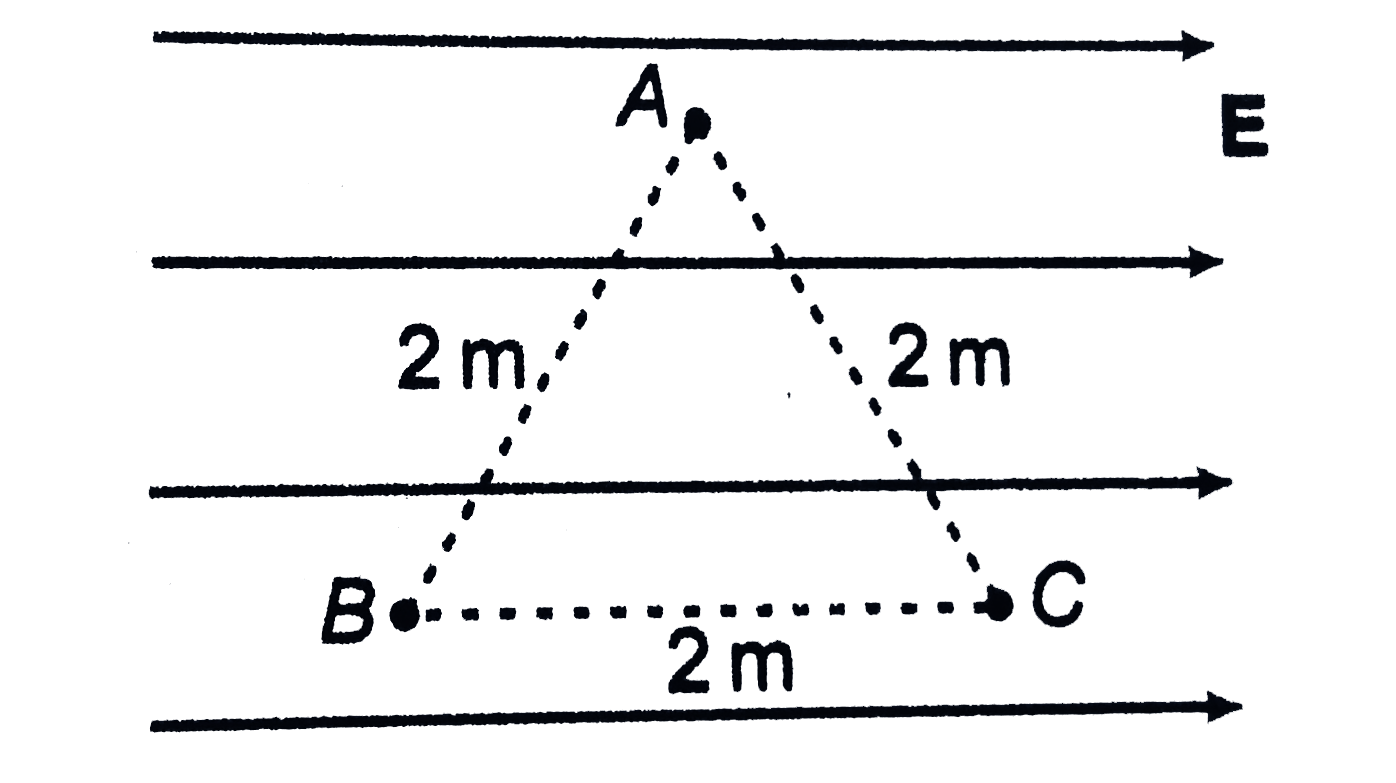Two points A and B are 2 cm apart and a uniform electric field E acts along the straight line directed A to B with . A particle of charge is taken from A to B along AB, Calculate
a. the force on the charge
b. the potential difference and
c.the work done on the charge by E
The correct Answer is:A, B, D
a. Electrostatic force on the charge,
b. In uniform electric field,
or
c.
Topper's Solved these Questions
- BOOK - DC PANDEYCHAPTER - ELECTROSTATICSEXERCISE - Exercise 24.14videos
ELECTROSTATICS
- BOOK - DC PANDEYCHAPTER - ELECTROSTATICSEXERCISE - Exercise 24.29videos
ELECTROSTATICS
- BOOK - DC PANDEYCHAPTER - ELECTROSTATICSEXERCISE - Example Type 83videos
ELECTROSTATICS
- BOOK - DC PANDEYCHAPTER - ELECTROSTATIC POTENTIAL AND CAPACITORSEXERCISE - (C) Chapter exercises50videos
ELECTROSTATIC POTENTIAL AND CAPACITORS
- BOOK - DC PANDEYCHAPTER - GRAVITATIONEXERCISE - All Questions120videos
GRAVITATION
Similar Questions
In an uniform electric field of strength E, a charge particle Q moves point A to point B in the direction of the field and back from B to A. Calculate the ratio of the work done by the electric field in taking the charge particle from A to B and from B to A.
View SolutionA point charge is taken from a pint A to a pint B in an electric field. Does the work done by the electric field depend on the path of the charge ?
View Solution
Knowledge Check
- Question 1 - Select One
The work done in carrying a charge of 5μC form a point A to a point B in an electric field is 10mJ. The potential difference (VB−VA) is then
A+2kVB−2kVC+200VD−200V - Question 2 - Select One
The work done in carrying an electron from point A to a point B in an electric is 10 MJ. The potential difference (VB−VA) is then
A+2kVB−2kVC+200VDNone of these - Question 3 - Select One
In uniform electric field E=10N/C, find

a. VA−VB , b. VB−VCA−10V and 20VB10V and −10VC30V and 20VD−10V and 40V
Calculate the work done in taking a charge of 0.02 C from A to B, if the potential at A is 20 V, and that at B is 30 V.
View SolutionIf 10 J of work is to be done in moving a charge of -200C from A to B, which of the two points is at higher potential ? What is the potential difference ?
View SolutionCalculate the work done in taking a charge of 0.02 C from A to B if the potential at A is 20 V, and that at B is 30V.
View SolutionIf a point charge +q is taken first from A to C, and then from C to B of a circle drawn with another point charge +q at the center (Fig) then along which path more work will be done ?
 View Solution
View SolutionIn the electric field of a point charge (+q) , placed at the centre of a circle , a certain test charge is carried from point A to B, C,D and E Least amount of work is done along the path
 View Solution
View Solution

